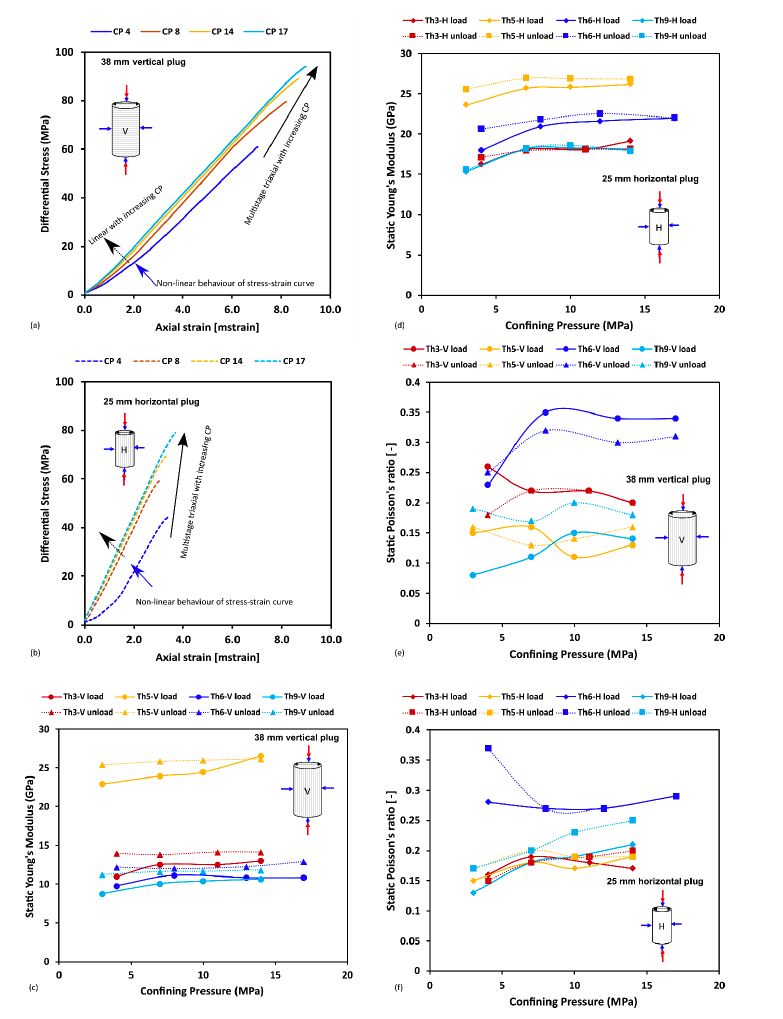Triaxial Deformation of the Goldwyer Gas Shale at In Situ Stress Conditions


Triaxial Deformation of the Goldwyer Gas Shale at In Situ Stress Conditions – Part I: Anisotropy of Elastic and Mechanical Properties
The evolution of shale’s mechanical properties with confining pressure, temperature, and mineral composition directly influences fracture closure besides the effect of in situ stress variation across lithologies. We are the first to perform experimental study to characterize the mechanical properties of the Goldwyer gas shale formation located in the Canning Basin, Western Australia. We have performed constant strain rate multistage triaxial tests at in situ stress condition (confining pressure ≤ 22 MPa) on 15 samples of the Goldwyer gas shales with variable minerology, organic content, and heterogeneity. Deformation tests were conducted at room temperature and in drained conditions on cylindrical samples cored parallel (horizontal) and perpendicular (vertical) to the bedding plane. Both triaxial compressive strength (σ TCS ) and static young’s modulus E show a strong sensitivity to confining pressure and mineralogy, while only E shows a directional dependency, i.e., E h > E v . The internal friction coefficient μ i in a plane parallel to the bedding is 0.72 ± 0.12, while it is only 0.58 ± 0.17 in the orthogonal direction. Both σ TCS and E are significantly lower when larger fractions of weak mineral constituents are present (clays or organic matter). We observe that the Young’s modulus of most vertical samples is best approximated by Reuss’s bound, whereas that of horizontal samples is best approximated by Hill’s average of Voigt and Reuss bounds. The most prospective G-III unit of the Goldwyer shale formation (depth > 1510 m), is semi-brittle to brittle, making it suitable for future development.
For more information on this paper please contact Qeye.
